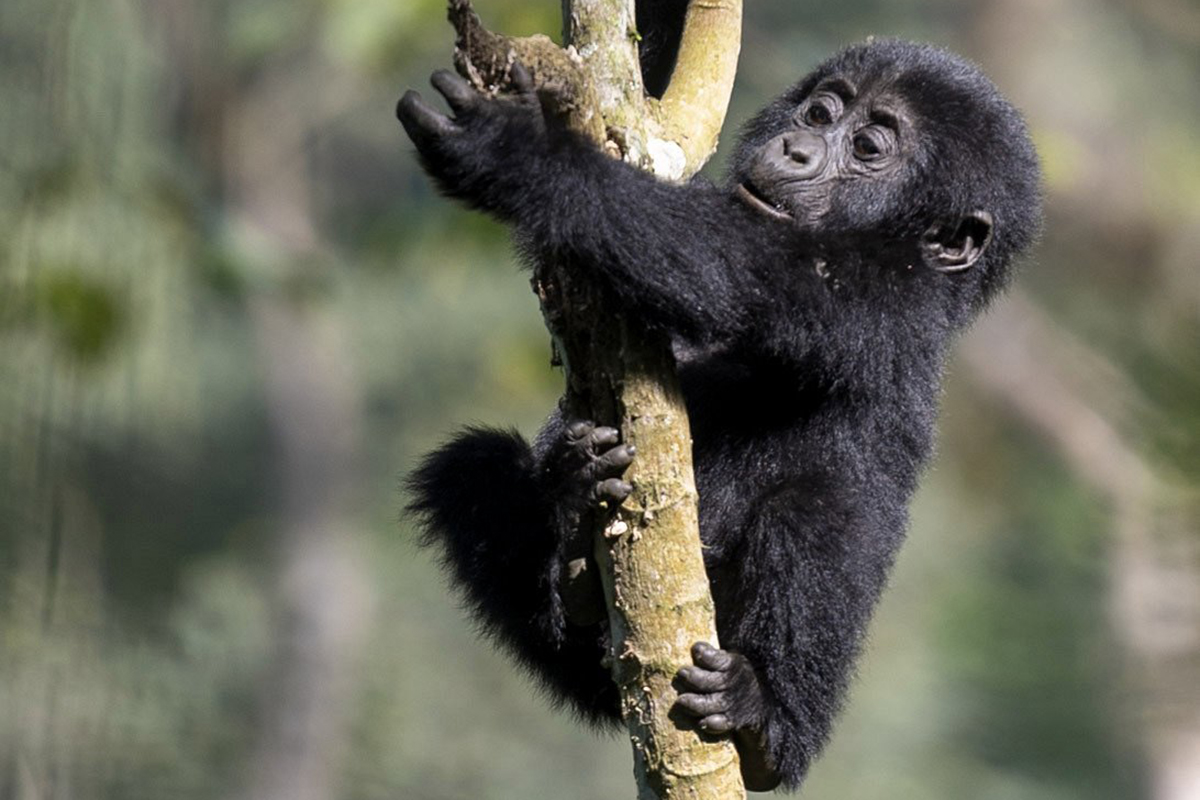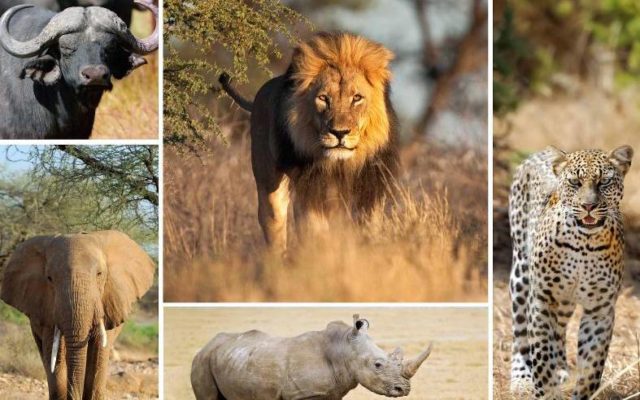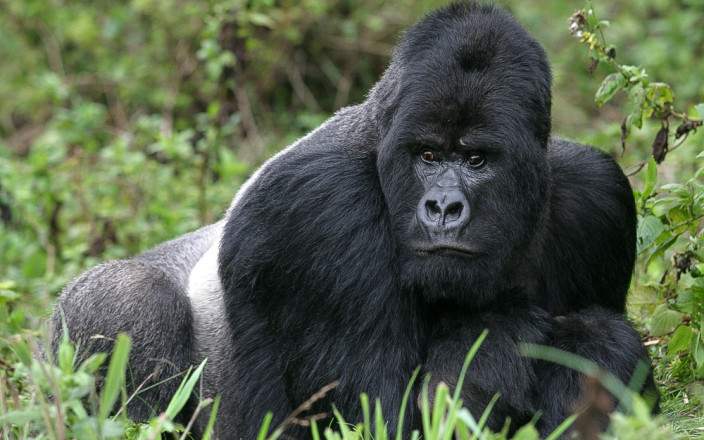Gorilla Photography in Uganda: Capturing the Majestic and giant apes of Uganda’s rainforests. Uganda’s dense forests are home to one of the most iconic and endangered species on the planet—the mountain gorilla. Gorilla photography in Uganda offers a unique opportunity to witness these majestic creatures up close and immortalize moments that are sure to stay etched in memory forever. Below is a guide to gorilla photography in Uganda, from preparation to execution. By the time you read to the bottom of the page, you will be remaining with booking your gorilla photography safari.
What is the right Preparation and Gear for gorilla photography in Uganda?
Camera Equipment: Ensure you have a good quality DSLR or mirrorless camera with a telephoto lens (70-200mm or longer) to capture close-up shots of the gorillas without disturbing them.
Additional Gear: Bring a sturdy tripod for stability, extra batteries, memory cards, lens wipes, and a rain cover to protect your equipment in the sometimes unpredictable Ugandan weather.
Research and Practice: Study gorilla behavior and photography techniques before your trip. Practice shooting in low light conditions and capturing fast-moving subjects to be prepared for the unique challenges of gorilla photography.
What is the Gorilla Trekking Etiquette in Uganda?
Respect Distance: Follow park regulations on maintaining a safe distance from the gorillas to avoid disturbing their natural behavior. Keep a respectful distance and let the gorillas come to you.
Quiet and Calm: Gorillas are sensitive to noise and sudden movements. Maintain a quiet and calm demeanor during the trek and while photographing to avoid startling them.
Listen to Guides: Listen to the instructions of your guides and follow their advice on how to behave around the gorillas. They are experienced in gorilla behavior and can help you get the best photographic opportunities.
Uganda gorilla Photography Tips
Natural Light: Utilize natural light to capture the gorillas in their natural habitat. Early morning or late afternoon light can create beautiful and atmospheric images.
Focus on Eyes: The eyes are the windows to the soul, even in gorillas. Focus on capturing the emotion and expression in their eyes to create compelling and engaging photographs.
Composition: Pay attention to composition, framing, and angles to create visually striking images. Experiment with different perspectives to capture unique shots.
Behavior Shots: Capture the gorillas’ interactions, expressions, and behaviors to tell a story through your photographs. Look for moments of playfulness, affection, or curiosity.
Post-Processing and Sharing
Editing: Use post-processing software to enhance your gorilla photographs. Adjust exposure, contrast, and colors to bring out the best in your images while maintaining their natural look.
Sharing: Share your gorilla photography on social media, photography platforms, or with friends and family to showcase the beauty and importance of gorilla conservation in Uganda.
Conservation Message
Through your gorilla photography, you can raise awareness about the conservation efforts and challenges faced by mountain gorillas in Uganda. Highlight the importance of protecting their habitat and supporting conservation initiatives to ensure the survival of these incredible creatures for future generations. Gorilla photography in Uganda is a rewarding and unforgettable experience that allows you to connect with nature in a profound way. By following ethical guidelines, respecting the gorillas’ space, and capturing their beauty through your lens, you can create stunning images that not only document your journey but also contribute to the conservation of these remarkable animals.
Which Sector is best for photography in Bwindi National Park?
In Bwindi Impenetrable National Park, each sector offers unique opportunities for gorilla photography. The best sector for photography in Bwindi can depend on various factors such as the behavior of the gorilla groups, landscape diversity, and accessibility. Below is an overview of the different sectors in Bwindi and what makes them suitable for photography:
Gorilla photography in Buhoma Sector
Buhoma sector is one of the most popular sectors for gorilla trekking and photography. The terrain is diverse, with thick forests, clearings, and bamboo forests, providing a variety of backdrops for photography. Several habituated gorilla groups are found in this sector, offering opportunities to observe and photograph different behaviors and interactions. Buhoma is easily accessible and has a range of accommodations nearby, making it convenient for photographers.
Gorilla Photography in Ruhija Sector
Ruhija is known for its stunning landscapes, including rolling hills and mist-covered forests, providing a picturesque setting for gorilla photography. This sector is home to several gorilla families, and the terrain offers opportunities for capturing gorillas in different natural settings. Ruhija is less crowded than other sectors, providing a quieter and more serene environment for photographers to focus on their subjects.
Gorilla Photography in Rushaga Sector
Rushaga is renowned for its diverse gorilla families and the interactions between them, offering unique opportunities for capturing social behaviors and dynamics. With a high number of habituated gorilla groups, photographers have a good chance of observing and photographing a wide range of gorilla behaviors. The terrain in Rushaga can be rugged and hilly, requiring a moderate level of fitness for trekking.
Gorilla Photography in Nkuringo Sector
Nkuringo is known for its panoramic views of the Virunga Volcanoes and the Bwindi forest, providing a dramatic backdrop for gorilla photography. The gorilla families in Nkuringo sector are accustomed to human presence, offering opportunities for close-up photography and intimate shots. Trekking in Nkuringo can be challenging due to steep terrain, but the views and photographic opportunities make it worth the effort.
Tips for Choosing the Best Sector for Photography in Bwindi Impenetrable National Park
- Consider the type of landscape you prefer for your gorilla photography—whether you want lush forests, open clearings, or mountain vistas.
- Research the habituated gorilla groups in each sector and their behaviors to choose the ones that align with your photography interests.
- Evaluate the accessibility and accommodation options in each sector to ensure a comfortable and convenient photography experience.
Ultimately, the best sector for photography in Bwindi depends on your preferences, photography style, and the type of gorilla encounters you wish to capture. Each sector offers a unique blend of landscapes, gorilla groups, and photographic opportunities, ensuring a memorable and rewarding experience for photographers seeking to capture the beauty and essence of mountain gorillas in their natural habitat.
What is the best time for gorilla photography in Uganda?
The best time for gorilla photography in Uganda depends on several factors, including weather conditions, vegetation density, and the behavior of the gorillas. Below are some considerations to help you determine the best time for gorilla photography in Uganda.
Dry Season (June to September and December to February)
Weather: The dry season in Uganda, particularly from June to September and December to February, offers relatively stable weather conditions with lower chances of rainfall. This can provide better lighting for photography and clearer views of the gorillas.
Vegetation: During the dry season, the vegetation is less dense, making it easier to spot and photograph gorillas in their natural habitat. The clearer sightlines can enhance your photography opportunities.
Photography Conditions: The drier months typically offer better lighting conditions for photography, with softer morning and afternoon light that can enhance your images. Crisp, clear days can result in stunning photographs of gorillas in their natural environment.
Wet Season (March to May and October to November)
Lush Vegetation: The wet season in Uganda, from March to May and October to November, brings lush greenery and blooming flowers, creating a vibrant backdrop for gorilla photography. The dense vegetation, however, can sometimes make it challenging to spot and photograph gorillas.
Fewer Tourists: The wet season usually sees fewer tourists visiting the national parks, which can result in a more intimate and less crowded gorilla trekking experience. This can be beneficial for photographers looking for unique shots without distractions.
Dramatic Lighting: While the wet season may bring intermittent rain and overcast skies, it can also create dramatic lighting conditions that add depth and atmosphere to your gorilla photographs. Rain can make for interesting compositions and reflections.
In conclusion, the best time for gorilla photography in Uganda ultimately depends on your preferences, photography style, and the experience you seek. Whether you choose the dry season for clearer views and stable weather or the wet season for lush vegetation and unique lighting conditions, Uganda’s mountain gorillas offer captivating subjects year-round for photographers seeking to capture their beauty and essence in the wild.




